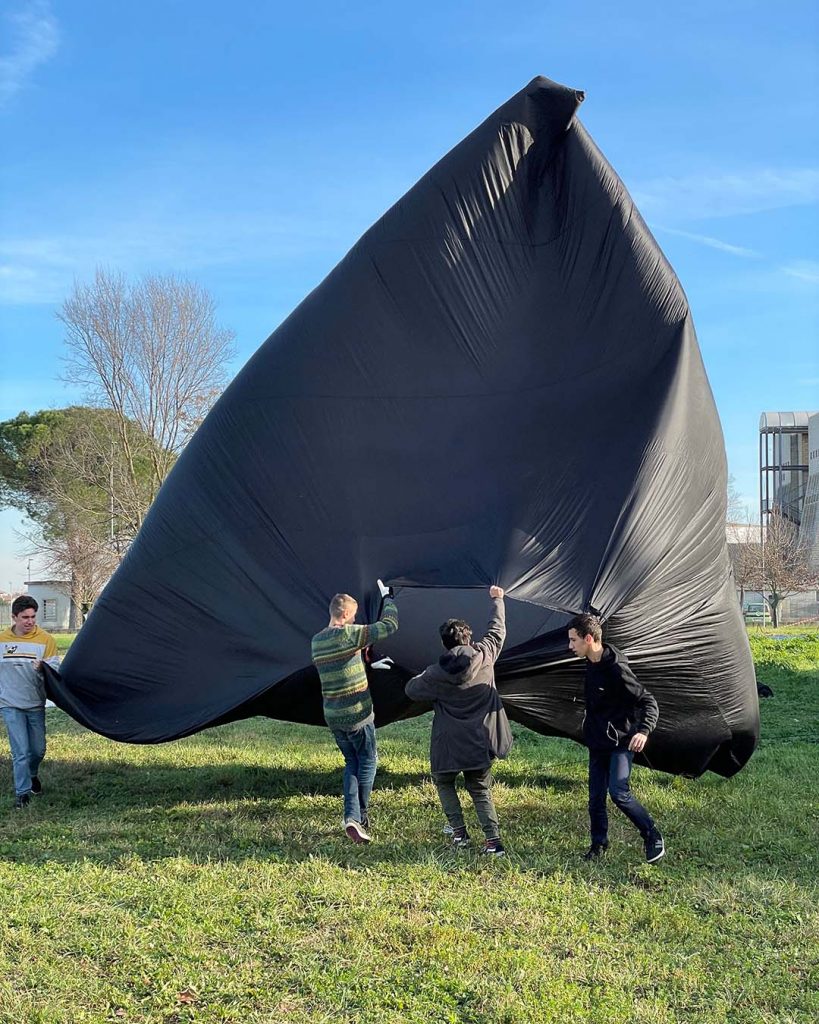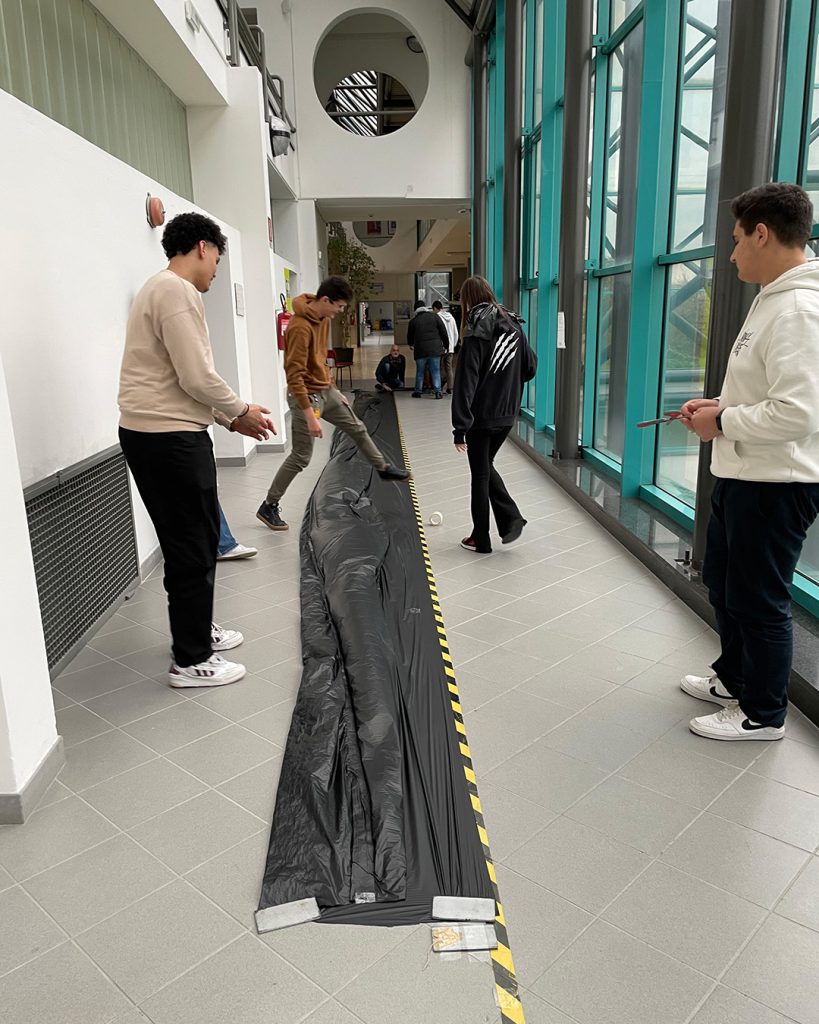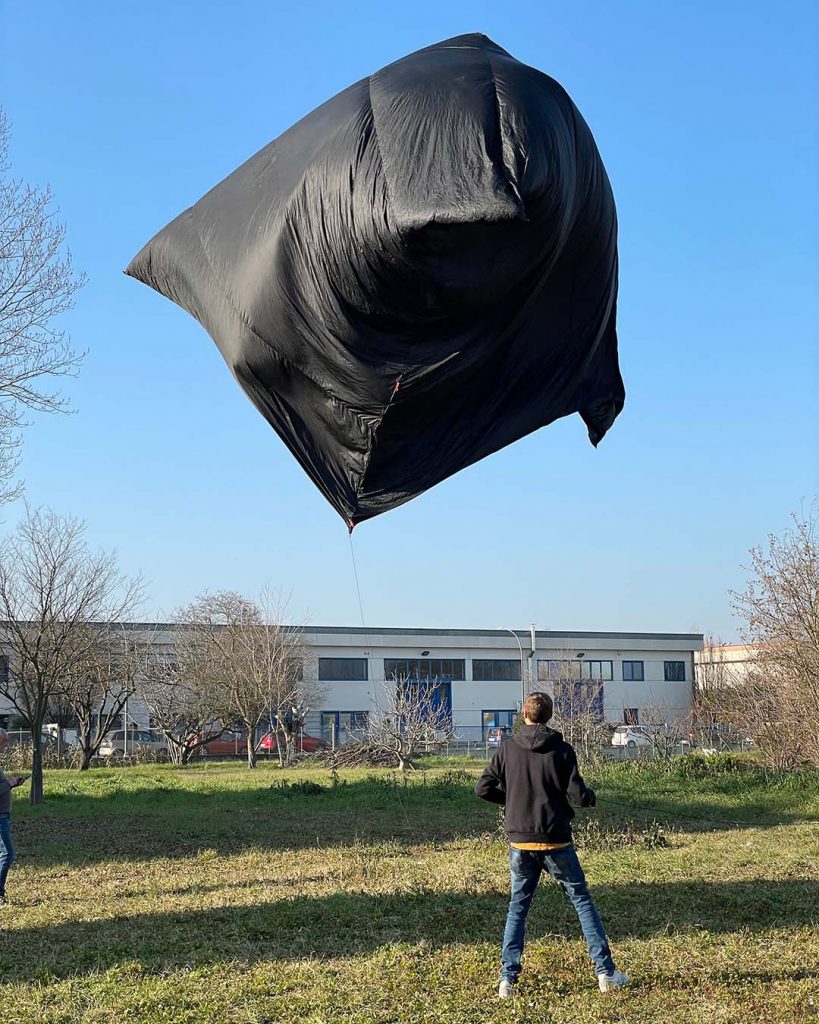An object from the Aerocene era challenged the aircrafts of the Anthropocene in their own territory; it was a meaningful experience for all participants.
On February 14, 2023, third-year students flew the Aerocene Sculpture into the skie of the F. Baracca Institute in Forlì, one of three aeronautical high schools in Italy, attended by students who come from all over Italy with dreams of becoming pilots or aircraft engineers.
The flight of the Aerocene sculpture was the last stage of a course that began in November 2022 and was designed at the boundary between art and science. Students learned the physics of an aerosolar flight and built two versions of Tetro following the manual available on the Aerocene website.


The course was designed thanks to the collaboration between physics teachers at the Baracca Institute and the Department of Physics and Astronomy of the University of Bologna, within the FEDORA European research project. Together we designed an extracurricular course to observe what happens when scientific knowledge meets an artistic language and to develop the sustainability skills outlined in GreenComp, the European sustainability competence framework published by the European Commission in 2022. The European document is intended to be a guide for those wishing to develop educational projects aimed at developing sustainability competences. The Aerocene art project seemed a suitable opportunity to achieve these educational goals at the Baracca Institute.
The course began with a lecture introducing the works of Tomás Saraceno and the Aerocene project, followed by a lesson on the physics of aerosolar flights and a workshop on building Tetro.
Afterwards, we flew the sculpture twice. The first attempt on January 12 was on a sunny day, but light white clouds veiled the sun and did not allow the sculpture to fly successfully. The second attempt occurred on February 14, in the early hours of a beautiful sunny afternoon, with blue skies cleared of clouds. The sculpture soared a few meters into the open space around the school, a few dozen meters away from the runway of Forli’s small airport. An object from the Aerocene era challenged the aircrafts of the Anthropocene in their own territory; it was a meaningful experience for all participants.
The students were very happy to experience a new way of flying, totally different from what they learn in their school. The encounter with an art form was surprising and exciting for them and offered a unique opportunity to reflect on climate change and the need to change our habits. This experience expanded their idea of what it means to fly, made them understand how we can collaborate with nature, and showed an unprecedented way to relate to the air. The students had an artistic experience that emotionally enriched their vision of a more sustainable future, making the message more effective and persistent.


Now, it remains to finalize the project with the flight test of the two student-built sculptures as soon as the sun and wind allow. We are all happy to have been part of the Aerocene Community. The Baracca Institute will repeat the experience in future years, helping to raise awareness of Aerocene and expand its community.
At the end of the course, one student wrote, “I express my desire that art and science continue to travel together; working on this project has engaged me and I hope to work on equally exciting projects in the future.”
We hope that other schools will have the same experience.
